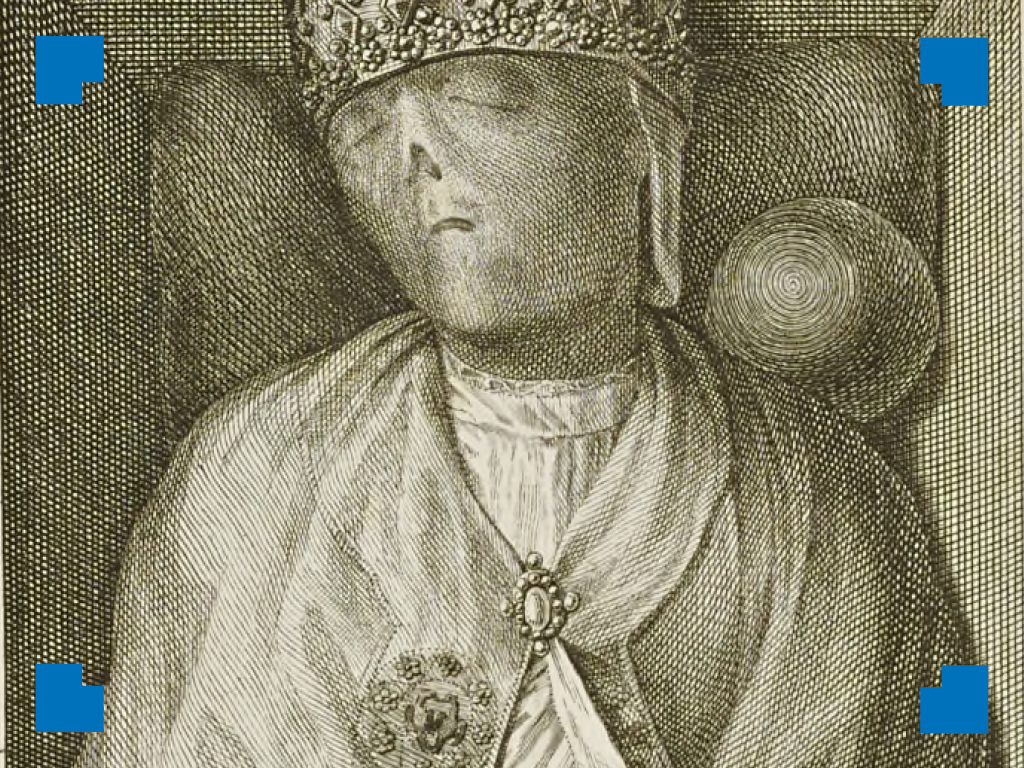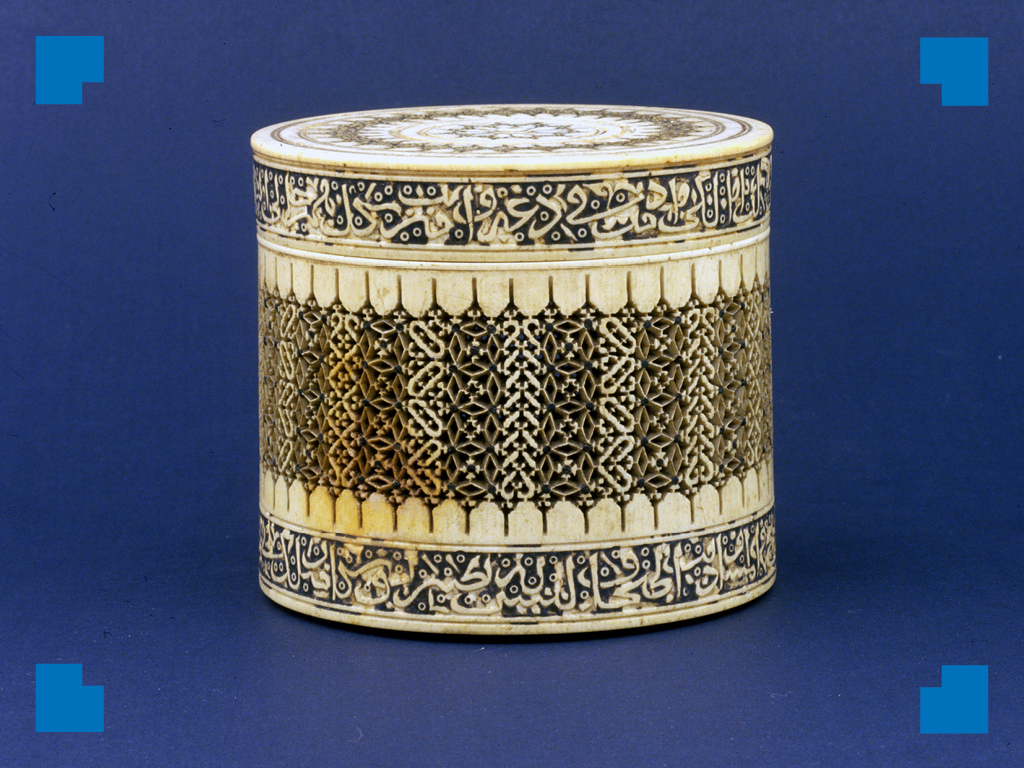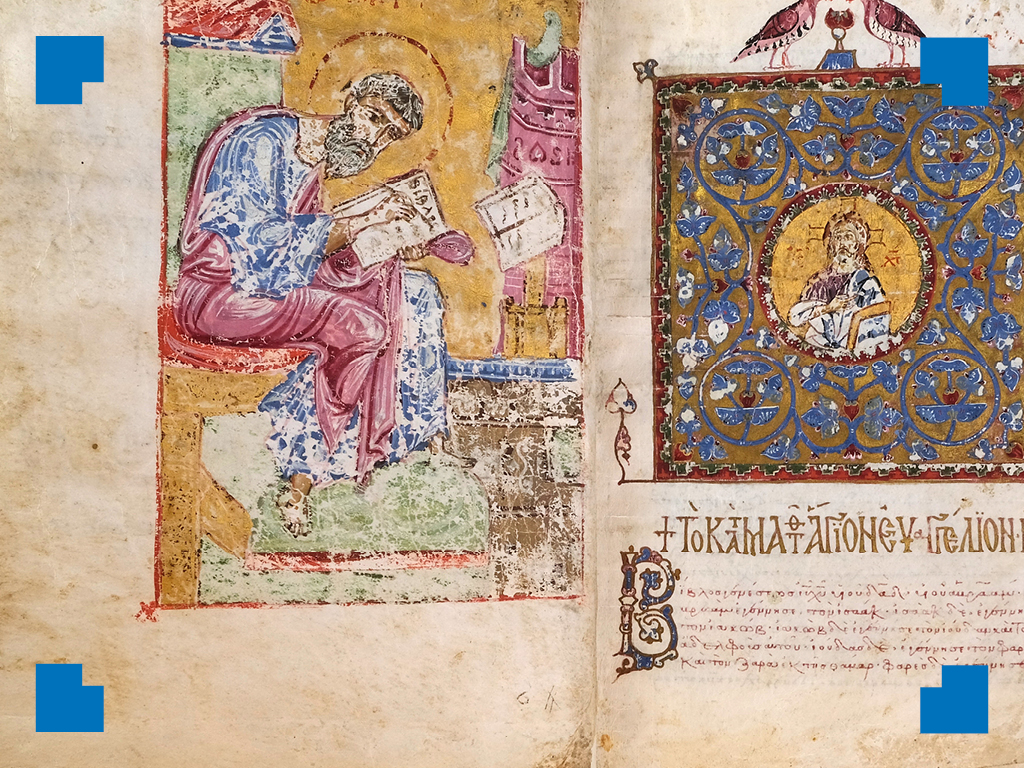
1. Frontal called ‘of Archbishop Carondelet’
Sicilian and West European craftsmen, 16th-17th c.
Frontal called ‘of Archbishop Carondelet’
velvet and canvas embroidered in gold and polychrome silk
with freshwater pearl beads appliqués of materials from the 13th and 14th centuries,
including n. 6 Swabian eagles (101×317 cm)
Palermo, Treasure of the Cathedral
The frontal is the frontal covering of the altar in churches that is visible to the faithful. In addition to fixed frontal, some movable ones were often made for solemn occasions and decorated with particularly precious materials.
The central image often depicts the name of the church or chapel for which the frontal was made. The frontal on display (1536?, then modified the 15th c.) was perhaps a gift of the archbishop of Palermo Jehan Carondelet (1520-44), who was originally from Franche-Comté and lived between Flanders and Burgundy, to adorn the high altar of the Cathedral of Palermo which is dedicated to the Assumption of Mary. At the center of the upper band, the image of the Assumption, the Eternal Father and angels, in embossed gold and gilded silver foils.
In the complex embroidery decoration particular relevance is given to six precious eagles with blue enamel, symbols of imperial power but also of victory and prosperity, which replaced previous ornaments now lost. They come from a decoration of Frederick dating back to the mid-thirteenth century.


